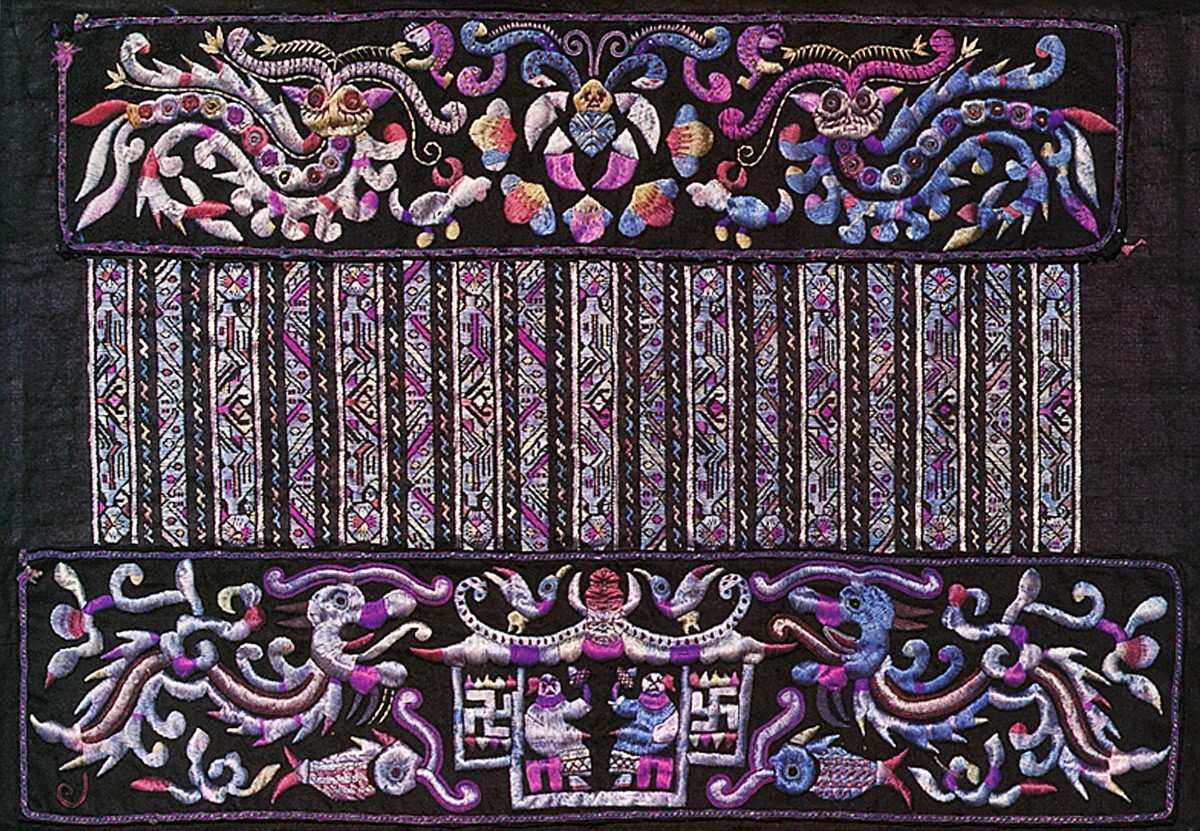A major exhibition of intricately embroidered, hand-woven textiles and silver headdresses, necklaces and bracelets from a mountainous province in the southwest that until recently was accessible only by footpath. The majority of objects in the exhibition were part of a collection acquired by Mingei International in 1998 and 1999 with gifts from an anonymous benefactor and the Hamilton-White Foundation. Since that time the Museum’s large core collection of Guizhou art has grown with significant additional purchases and gifts.
A 216-page Mingei International exhibition documentary publication accompanied the exhibition. This book and a Mingei International documentary videotape were made possible by an anonymous foundation.
Following the Members’ Reception for the exhibition on October 19, Phila McDaniel, Curatorial Consultant, presented an illustrated exhibition in the Warren Theater Gallery.
Gina Corrigan, British author of _Odyssey Illustrated Guide to Guizhou and Miao Textiles of China,_ presented an illustrated lecture in the Museum on December 8, 2002.
Few westerners have explored Guizhou, the last province opened to tourism by the People’s Republic of China. Phila McDaniel is the first American to escort a group from America to this beautiful and mysterious terraced land. She has made 50 visits to China, including 27 to Guizhou, home to many ethnic groups. During these trips she has acquired an extraordinary collection of embroidered textiles, adornment and other arts of daily life.
With 17 of China’s 56 nationalities living in harmony in autonomous areas within its boundaries, Guizhou’s people are diverse and exotic. These nationalities are made up of clans, each with its own ancient traditions of elaborate dress and adornment worn in their daily lives and at festivals, where young people meet and choose life partners. Elaborate costumes not only enhance the beauty of the young women, but also demonstrate their creativity, skill and patience. A frequent village sight is that of girls sewing by starlight and early morning sunlight, creating their distinctive embroideries.
Requiring extraordinary time and effort, four or five years are often devoted to weaving and embroidering these elaborate garments, which in some cases are made up of several skirts and may weigh 40 pounds. In addition, the weight of a young woman’s elaborate silver jewelry may require that she have assistance in walking.
All aspects of festival dress and adornment reveal the origin and history of particular nationalities, clans and subgroups in distinctive colors, patterns and techniques as well as symbolic and historic design motifs. One such motif is the dragon with countless design variations, each specific to the group that uses it. For instance the Miao culture is known for its curling dragon and two-headed dragon. These designs are found on silver crowns, hairpins and ornaments as well as in embroidery and weaving.
The exhibition was funded in part by The Parker Foundation, the City of San Diego Commission for Arts and Culture and the County of San Diego Community Enhancement Program.
